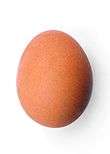Scotch egg
.jpg) Scotch egg, halved | |
| Type | Picnic food |
|---|---|
| Place of origin | United Kingdom |
| Region or state | London |
| Main ingredients | slightly runny egg, sausage, bread crumbs |
A Scotch egg consists of a Soft Boiled egg wrapped in sausage meat, coated in bread crumbs and baked or deep-fried.
Origin
There are a number of different theories about the origins and etymology of Scotch eggs. The London department store Fortnum & Mason claims to have invented Scotch eggs in 1738 but the name for the snack was supposedly derived from a nick-name used by Londoners who lived around Wellington Barracks after Officers of the Scots Guards stationed there developed a taste for the snack. [1][2] According to Culinary Delights of Yorkshire, they originated in Whitby, Yorkshire, England, in the 19th century, and were originally covered in fish paste rather than sausage meat. They were supposedly named after William J. Scott & Sons, a well-known eatery which sold them. It has also been suggested that they were originally called "scorch" eggs, as they were cooked over an open flame. Other writers have noted similarities to a Mughlai dish called nargisi kofta ("Narcissus meatballs") and an Algerian dish.[3]
The earliest printed recipe appears in the 1809 edition of Maria Rundell's A New System of Domestic Cookery. Rundell, as well as other 19th-century authors, served them hot with gravy.[4]
Serving
Scotch eggs are a common picnic food. In the United Kingdom packaged Scotch eggs are available in supermarkets, corner shops and motorway service stations. Miniature versions are also widely available, sold as "mini scotch eggs" "savoury eggs", "picnic eggs", "party eggs", "snack eggs", "egg bites" or similar. These contain chopped egg or a quail's egg, rather than a whole chicken egg, and sometimes contain mayonnaise or chopped bacon.
In the United States, many "British-style" pubs and eateries serve Scotch eggs, usually served hot with dipping sauces such as ranch dressing, hot sauce, or hot mustard sauce. At the Minnesota State Fair Scotch eggs are served on a stick.[5] Scotch eggs are available at most Renaissance Festivals across the US.[6][7][8]
In the Netherlands and Belgium, Scotch eggs may also be called vogelnestje ("little bird's nest"), because they contain an egg, or eierbal ("eggball").
Regional variations
Several local variations exist. The Manchester Egg uses a pickled egg wrapped in a mixture of pork meat and Lancashire black pudding,[9] and the Worcester Egg uses an egg pickled in Worcestershire sauce and clad in a mixture of local sausage meat and white pudding.
See also
References
| Wikimedia Commons has media related to Scotch egg. |
- ↑ "Single Hen Scotch Egg". Fortnum & Mason. Archived from the original on 14 May 2014. Retrieved 22 August 2011.
- ↑ Glancey, Jonathan (5 November 2007). "A facial at Fortnums? Never!". The Guardian.
- ↑ "Are Scotch eggs really Scottish?". The Guardian. Retrieved 24 July 2018.
- ↑ Oxford Companion to Food, s.v. Scotch egg
- ↑ "Food Finder". Mnstatefair.org. Archived from the original on 30 August 2009. Retrieved 28 April 2014.
- ↑ "Food – The Original Renaissance Pleasure Faire". renfair.com. Retrieved 2018-04-09.
- ↑ "#9: Eat a scotch egg, ride a slide ... at the Renaissance Festival | 30 things before 30". 30thingsbefore30.wordpress.com. Retrieved 12 June 2013.
- ↑ "The Texas Renaissance Festival's "Five Bucket" List Delights to Die For | Eat Drink SETX – Southeast Texas Restaurants and Bars – Food – Drink – Event Guide". Eatdrinksetx.com. 25 November 2012. Retrieved 12 June 2013.
- ↑ Naylor, Tony (29 April 2010). "A plan is hatched: the Manchester egg". The Guardian. Retrieved 1 July 2010.
